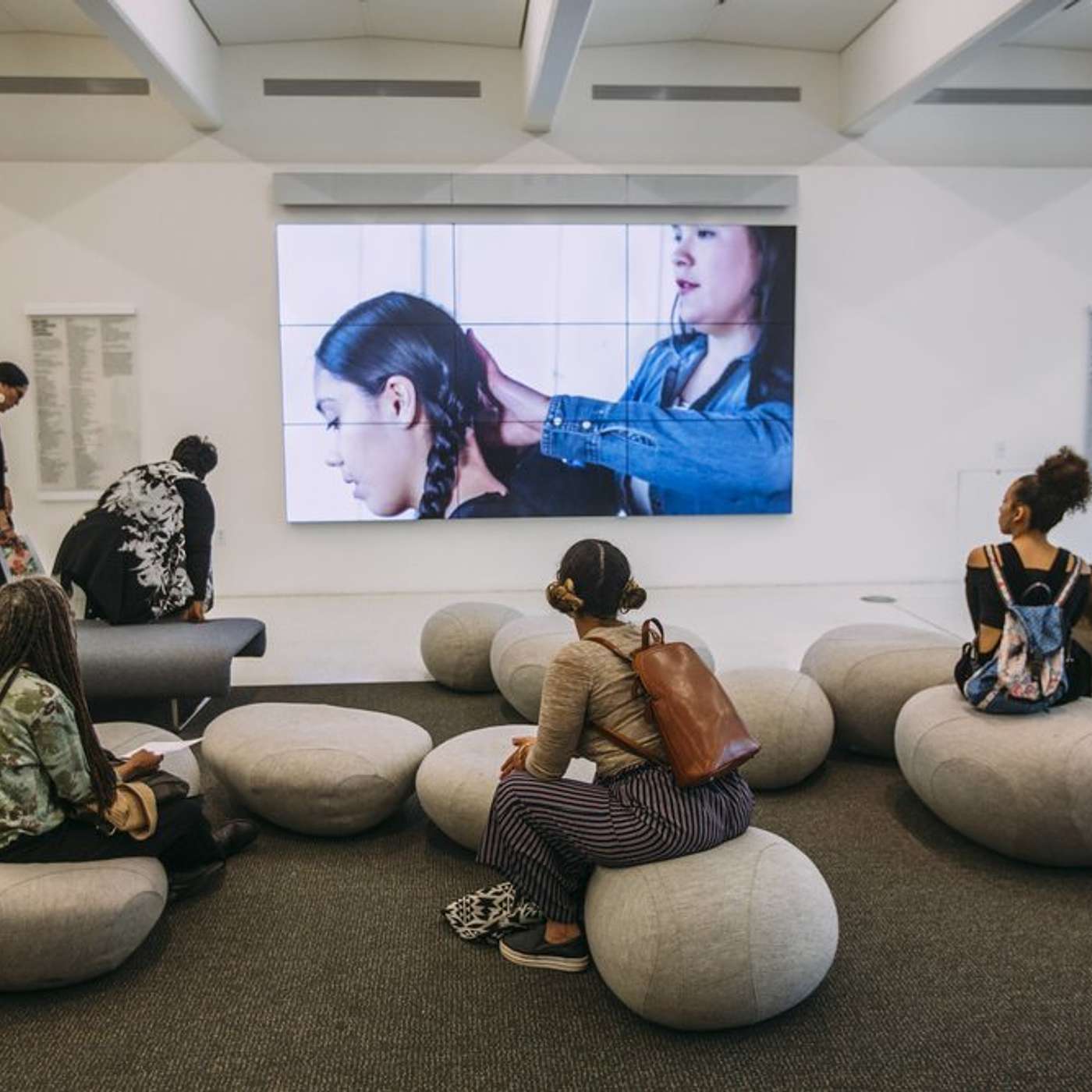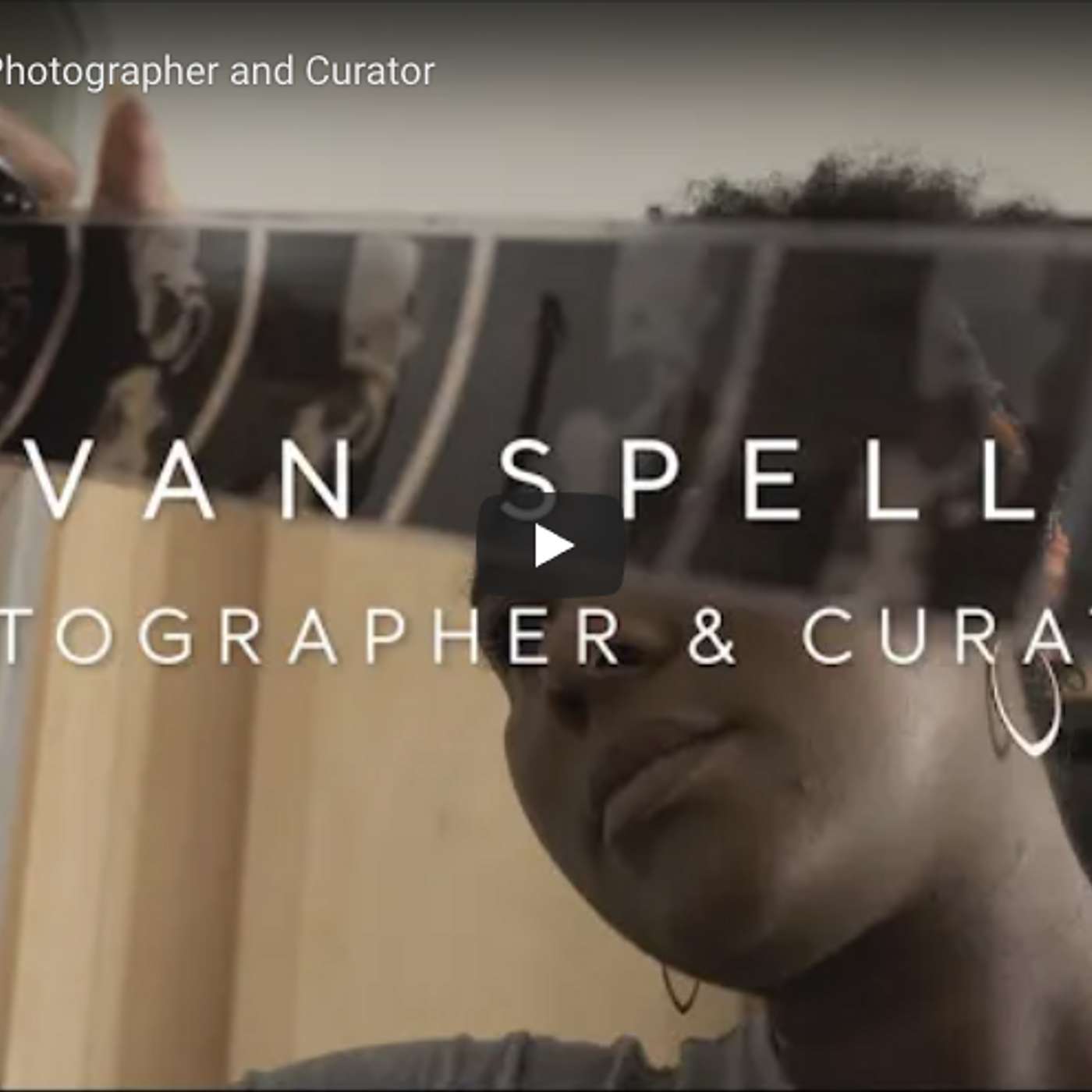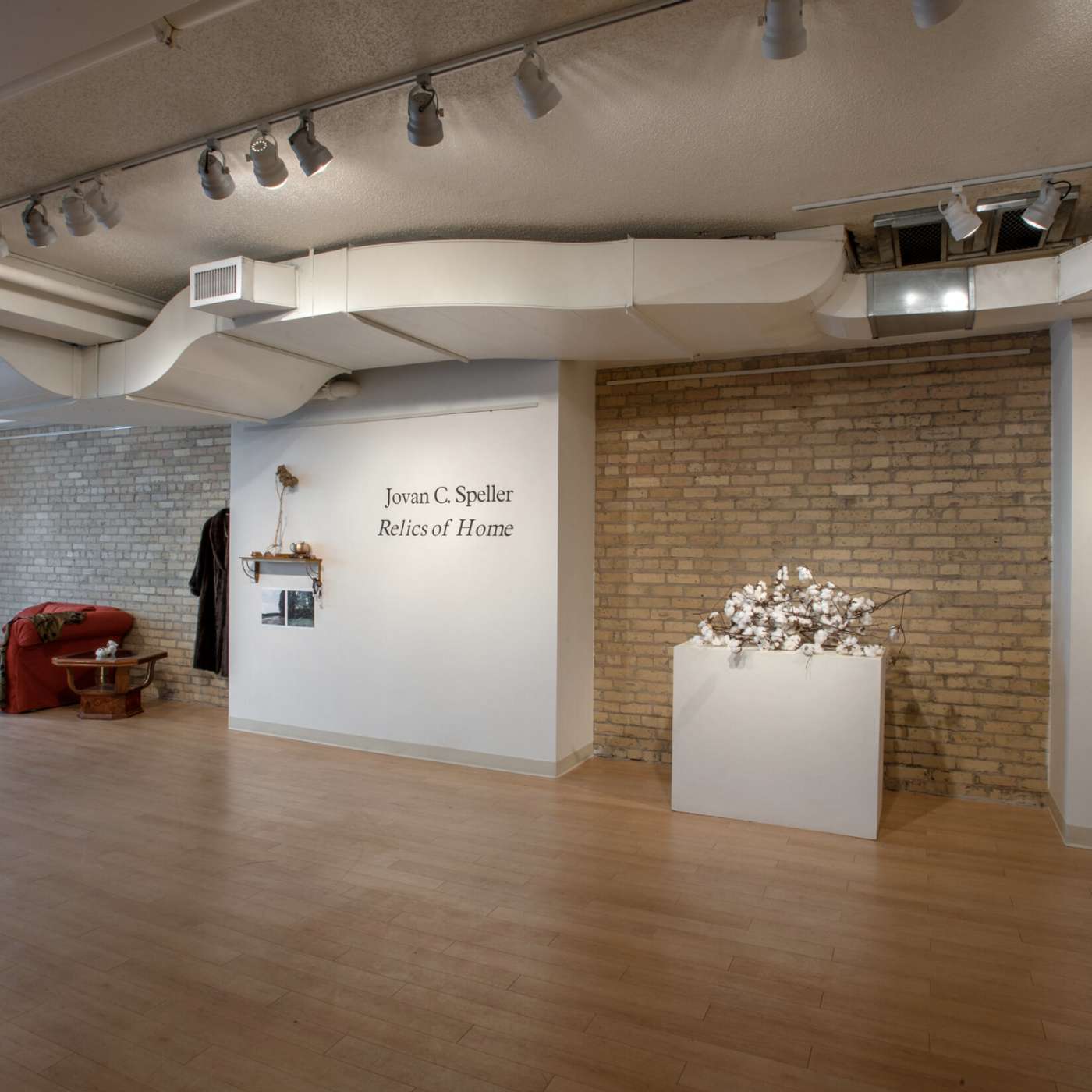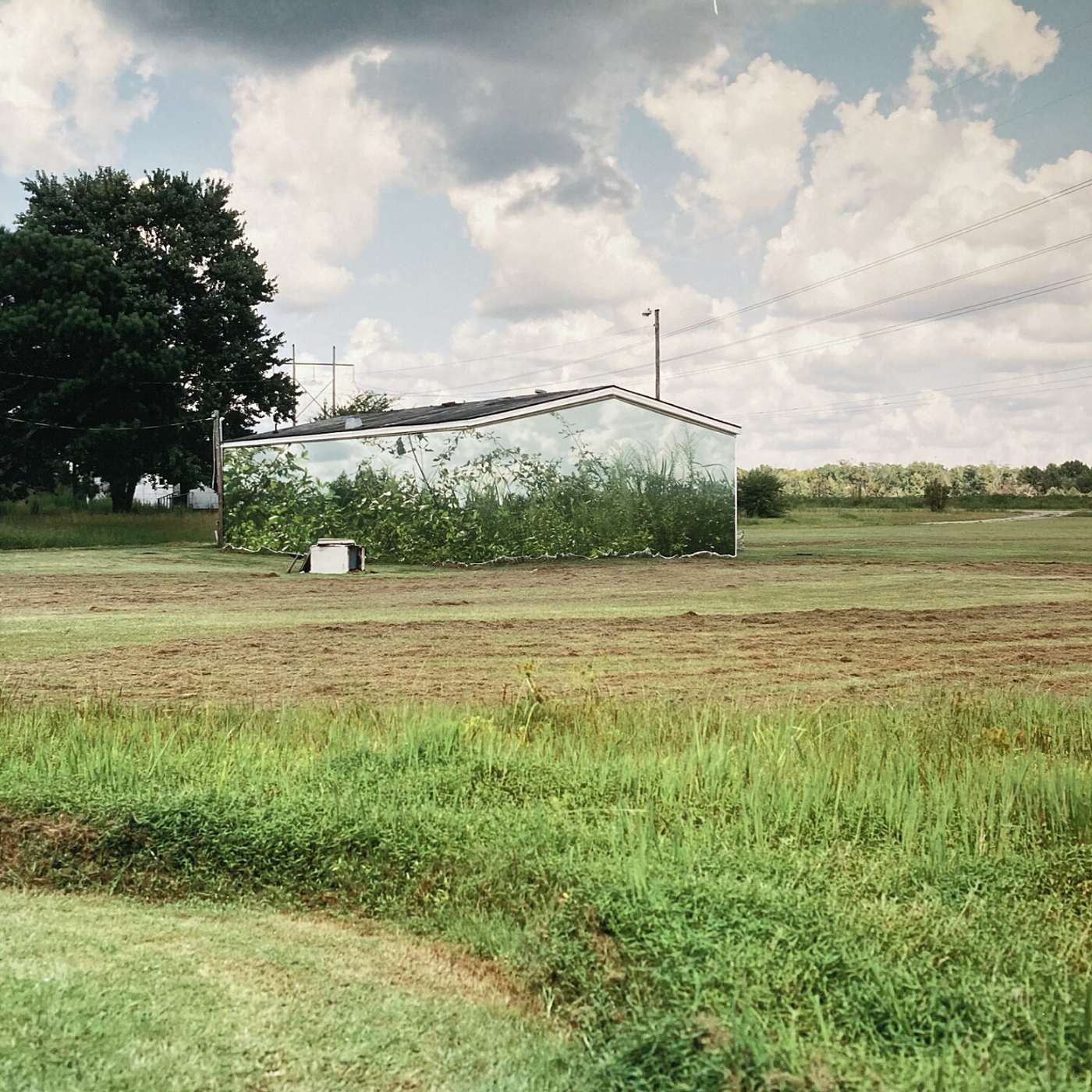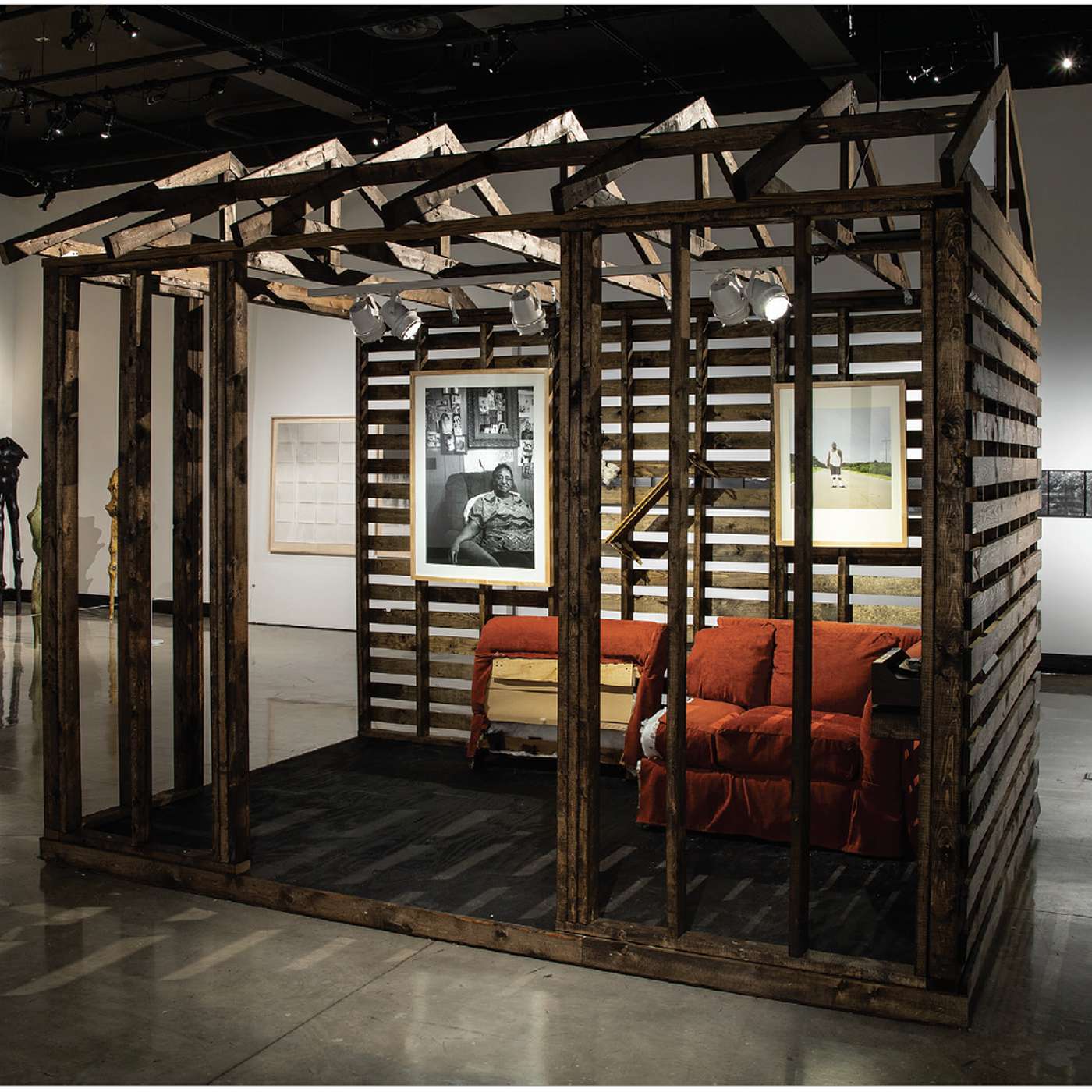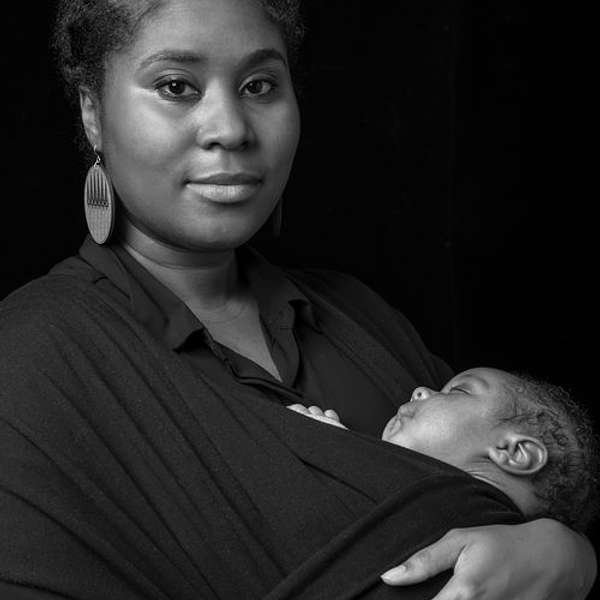
High Visibility: On Location in Rural America and Indian Country
High Visibility: On Location in Rural America and Indian Country
Memory, Myth, and Home: Jovan C. Speller
Jovan C. Speller joins Matthew Fluharty for a conversation on her recent work and its meditation on Black origins, land, and multilayered family histories.
Jovan C. Speller is a multidisciplinary artist based in Minneapolis, MN. Her work – visual, textual and performative – interprets historic narratives through contemporary discourse. Her research-based practice is centered around elevating, complicating and inventing stories that explore ancestry, identity, and spatial memory – making the intangible tangible and the invisible visible.
Speller holds a B.F.A. in Fine Art Photography from Columbia College Chicago. Speller's work has been exhibited at The Plains Art Museum, the Bockley Gallery, and Minneapolis College of Art and Design, with upcoming solo exhibitions at Aspect/Ratio Projects and the Minneapolis Institute of Art. She is a recipient of the McKnight Visual Artist Fellowship, a Next Step Fund Grant, the Jerome Emerging Artist Fellowship, and a Minnesota State Arts Board grant. She completed a residency at Second Shift Studio Space in St. Paul and was awarded the Carolyn Glasoe Bailey Foundation Minnesota Art Prize in 2021. Speller is represented by Aspect/Ratio Projects in Chicago.
For more information on Jovan's work:
http://jovanspeller.com/
For more information on the High Visibility exhibition at the Plains Art Museum:
https://plainsart.org/exhibitions/high-visibility/
High Visibility exhibition site: https://inhighvisibility.org/
In this conversation, Jovan mentions the following works:
This video of Jovan's photographic process, and the Choosing Home series, can be found here:
https://www.youtube.com/watch?v=yDuQLPAglfc
Relics of Home:
http://jovanspeller.com/relics-of-home
In Lottie's Living Room:
https://inhighvisibility.org/Jovan-C-Speller
High Visibility is a partnership with Plains Art Museum and Art of the Rural:
https://plainsart.org/
http://artoftherural.org/
We are grateful for the support of the Andy Warhol Foundation for the Visual Arts and the National Endowment for the Arts.
Hello, you're listening to high visibility. This is the podcast produced by Art of the Rural and Plains Art Museum welcomes into conversation artists, culture bearers and leaders from across rural America in Indian Country. It's offered in conjunction with the high visibility exhibition, a collaboratively curated effort, currently on view at Plains Art Museum through May 30 2021. My name is Matthew Fluharty, and I'm the organizing curator. In the months ahead, I'll be with you, along with other hosts from the Plains Art Museum and beyond. As this podcast here is the richly divergent stories lived experiences visions of folks across the continent. You can learn more by visiting the high visibility exhibition by heading to plainsart.org. We also welcome folks to check out the high visibility site at inhighvisibility.org, where we offer show notes and transcriptions of our conversations. Alongside further information on the individuals and work discussed here. We're grateful for the support of the Andy Warhol foundation for the visual arts and the National Endowment for the Arts, making this endeavor possible. And we welcome folks to check out and subscribe to these conversations on their favorite podcast platforms. Today we have the chance to speak with Jovan C. Speller. And to learn more about the experiences that shaped her ongoing relics of home project, and the installation in lady's room that is currently on view at the Plains Art Museum. We're publishing the selection from our larger conversation. So chances are, if you're listening to this now, there's an even deeper conversation available which avant to enjoy. Wherever you listen to podcasts. Jovan's work bridges visual art, writing in performance, with a research practice that she describes as centered around elevating, complicating, and inventing stories that explore ancestry, identity and spatial memory, making the intangible tangible and the invisible visible. Jovan C. Speller is currently focusing on expanding her art practice and experimenting with installation and sound works as an artist resident at second shift studio space in St. Paul, Minnesota. She is the recipient of numerous grants, including a McKnight visual artist fellowship, into Jerome emerging artists fellowship. Her photographic works have been published and exhibited in various exhibitions throughout the United States. Jovan holds a BFA in photography from Columbia College, Chicago, and studied art in Maryland Institute College of Art. Folks can learn more about her work at jovanspeller.com. This conversation was recorded in February 2021. And it ranges across a field of artistic, familial, spiritual and historical forces that her work so subtly interviews. I'm so grateful for Jovan's connective vision to this conversation for how on one hand, we have the opportunity to understand how a body of work deepens around a set of questions over time. But I'm also grateful for how she offers all of us new orientations new ways into thinking around some of the most central imperatives of our shared cultural moment. What follows is a meditation on origin stories in Black culture, and the potential for intercultural exchange with indigenous communities. And also a long term cultivation of various artistic and research practices that can witness and address legacies of nostalgia, trauma and cultural change through an attention to the land itself. Jovan references a few projects will share in the show notes so folks can dive deeper. The first is reflexive home, a long term effort that takes root in her family's multi generational stewardship of land in Windsor, North Carolina, on acres once tended by her enslaved ancestors. We also discuss in lady's room, an installation that brings those family stories into photographic and material presence in a reimagined structure from that land. Our conversation begins with giovane sharing, choosing home in evolving collaboration with Dyani White Hawk that began as a one night visual inquiry, supported by mn artists at the Walker Art Center. Through a wide ranging event featuring performances, conversations and video installations. Jovan and her collaborators created a space to sit with these questions. "Those with the privilege of power over this land," the United States, Jovan wrote,"proclaimed that it has no official language, that it is made up of immigrants in a place where freedom reigns. It was said to be a safe haven, a new start a dream. But what is home without the recognition and reconciliation of myths used as tools to manipulate and oppress generations of peoples? What is home when complicated by centuries of radical and violent displacement, forced relocation, captivity, migration and colonization?" This selection from our conversation begins here with choosing home, and in how the act of braiding hair became a bridging space for these collaborations. So without further ado, please settle in and enjoy our conversation with Jovan C. Speller.
Jovan C. Speller:I was actually, at the time of working on choosing home and kind of conceiving of it, I was also at the same time, starting to get images of what would later be relics of home. And it was really this exploration of defining home in origin stories, and tracing back origin stories in black culture, in particular, and in black families. But I felt, really, if I was going to honestly, look at ideas of home and origin, it was difficult to imagine doing that without at least starting the conversation about indigenous bodies, and indigenous people and culture and the overlaps between African Americans and Native Americans in this country. Because what is home, you can't talk about home in America without talking about indigenous people. And so I felt very uncomfortable doing that. And so I at the time really admired Dyani White Hawk's work and the way that she spoke about her work and, and, and her family and identity. And, I believe emailed her or called her, I don't even remember how I got her information. But we did not know each other at the time, but we had a phone call, and instantly, we're speaking the same language. And we both were looking for, like, we were curious about each other. You know, I think that's where things have to begin, you know. And the only thing you know, that we knew was there was similarity and ritual in our cultures, and so that we really started to explore that we, you know, talked about relationships with the land and stewarding the land and honoring land. But we really came back, you know, she and I are both really close to our mothers. And that led us to specifically like caring, caring of generations, and caring of women, and passing knowledge. And that led us to hair braiding.
Unknown:So
Jovan C. Speller:I think also at the time, she and I were both really interested in creating and working in film, and I had been working on a film idea for relics of home. And she had been working on a film idea, which I think is now at the Kemper Museum. So she's fully executed hers. And so we wondered if we could work with a filmmaker to kind of create this little explorative short, you know about hair braiding. And so she and I both interviewed our mothers separately about their relationship with hair, or relationship to hair with hair and culture, and the history of their hair story. And then we kind of created this generational overlap by shooting Auntie's braiding their nieces hair. Yeah. So that was that was that collaborative work. And we debuted that at Choosing Home: A Right, A Priviliger, or an Act of Trespass. So that was my question, just about choosing home in general. Was it a right? Was it a privilege, or was it an act of trespass and it's all of the above, but I wanted to explore those different avenues into home. So that's what that presentation at the Walker was really about.
Matthew Fluharty:What I would like to share just for folks who are listening would be welcome them to check out the show notes for our podcast, where we can link to what I thought was a video that they made that Twin Cities Public Television made of pretty wonderful that evening and also of your work. The video begins with some were able to visualize the photographic process that you mentioned earlier. It just was it was I thought was a really beautiful video in terms of how it connected your creative work to the curatorial work as well. It's really awesome, high quality video. And so I'm wondering that if we could just continue the thread. And I'm curious as, as the filmmaking process, kind of concluded, as that evening at the Walker, with choosing home, happened, and then opened up the reflective space that probably did for you. How did relics of home continue to emerge and take shape After choosing home?
Jovan C. Speller:Yeah, so that was the it's interesting. So one, like important detail in there is that when I was working on choosing home, I was eight, nine months pregnant. And the presentation debuted, I believe, it was like may 7, and then on May 9, I had my first child. So yeah, so I was, so like, disclaimer, if you're looking at that video, I'm super shiny, super pregnant, roll swollen, there's a reason I was nine months pregnant, okay. But, um, but there was this like, great momentum, this kind of converging of the stars, after we finished that, that presentation, because I felt it even more urgent and more important to understand origin. And reconcile my issues, perhaps it's the right word issues with not knowing, like, the full story. And no, there's, I have not yet met a black person who is a descendant of a slave that knows the full story like where you're from, and can really track back to African culture, or a specific African culture or country that really can inform identity, rituals, spirituality, right those like, again, that has been a continuum in my exploration and my research, I've wanted to connect back authentically, to some spiritual ritual. So I was really feeling this intense urgency of needing to reconcile that need that feeling of there is something that I don't know there's something missing, because I understand generational trauma and did not want to carry mine forward through to my child, more than I already had. So, so it was really interesting because it required generations of my family to be involved in the project in order to make it happen. So, you know, my brother accompanied me to Windsor, North Carolina. I was, I think, Silas my firstborn. He was like, three months. on that trip. My father drove up from Georgia, I think, to meet his grandson and introduced me to some relatives. My mother drove up from Tennessee, to hang out with her grandson while I was off shooting. And my uncle, my uncle Wayne, I think he was in New York at the time. Oh, no, no, no, no, no, no. No, I can't remember. But he, he, he goes back and forth between North North Carolina and New York. So I don't remember where he was living at the time. But I remember picking him up at maybe it was Asheville and Asheville before we went to Windsor. So we endeavor with all of these relatives, and with it all of their drama that I did not know about, right, with family comes drama, and trauma, but um, you know, I didn't know that my father and my uncle had not been speaking because of something that happened right there on that land. I didn't know that these relatives But I had not yet met had been a part of like this drama of you know what happened right before my Father sold that land. So there was like, you can call it kind of two camps in the family, those who wanted to keep the land and those who wanted to sell it and didn't think it was worth anything. And I think that, for me, in my generation, I couldn't understand how anyone would think that the land wasn't worth anything, when it held all of this history, when it held the blood of our ancestors and the bodies of our ancestors on some parts of the property, how could that not be enough value? And, you know, that goes back to why does right but anyway, you know, understanding our own value within our community within our culture is also work. making this happen was really like kind of being this cross between, you know, a researcher, and artist, photographer, mother, nice daughter, and kind of like anthropologist, as well. And so, I had to put on all of these many hats, while also learning how to be a mom. And fighting off the ginormous bugs that are in the kind of what they're huge. They're like three inches, and swarming around you. Anyway. So you know, so there was a lot, there was a lot, there was a lot to battle, there was a lot to contend with, both physically and just the logistics of being in that kind of new terrain. And then, in terms of access, because technically, we had sold this land, but my uncle still owned a trailer that was on part of the land. And then the farm had been sold later and was overgrown. But the house was was sold but broken into already. So it was open. So there were all of these like questions of like, access of trust in my trespassing in my not whose property is this, there were all these questions of ownership. So basically, when I got there, it was not a straightforward story. And I thought I was going to find a straightforward authority. And that's just like my general optimism like that, like I thought that I would find this, you know, oh, I'll just kind of take my I remember my original proposal, because I did have to write a grant to get the funds to go do this work. But my original proposal was to depict these, the land almost as a portrait. Right? So if I wasn't going to take landscape images, I was going to take a portrait of the land and discover kind of like, Who is this land, right and personify it. And then when I got there, I couldn't separate the people from the place. I don't know why I thought that I could, but I couldn't separate the people from the place that couldn't separate the stories or the trauma. And so it became this really complicated, really layered thing, which then made me call on that technique of layering and cutting apart images and putting it back together in a more narrative way. So yeah, that's how that came to be, visually. And I think, you know, the all of the people involved, like the work wouldn't be the work with all of the people in the work involved, and all of the, their level of openness with me and sharing their side of the story, their memories, their myths, you know, the all of those, all of those voices really shaped the work.
Matthew Fluharty:It's powerful, because for folks who have been to the Plains Art Museum to see high visibility, the work that is in those galleries In Lottie's Room, it feels like an extension of the work you're describing. And there's a quality between between all of this work that really came to the fore is as you were just sharing all of this Jovan and it's this notion of time. And notions of nostalgia, you know, and in the style as a Western concept. You know, when we go back to the Greek it means lost home. And nostalgia really has been since since the Greek and Roman Empire, an element that has been weaponized for ideological and political ends. And we've seen so much of it in in recent memory as well. So there's that tradition, but there's like this, this other tradition that Replacing Home I believe, which carries forward the collage practices you were talking about. earlier and Black Quiet. And folks will will link to this in the show notes as well, so folks can see the image. But that is a really powerful image. I keep going back to it. And you know, when we were preparing for this, this conversation, I shared this quote, but the artists performing artist essays director, Daniel Alexander Jones, shared this quote by Alice Coltrane with me a couple years ago, where she's talking about ancestors, and I don't have it exactly correct. But hopefully it hits the same spiritual tone where she says they will be there, they will be there in trans Linear Light. And I and I came to that quote, because there's something in the spirit of what Alice Coltrane shares that absolutely resist the really linear and very restrictive nature of the kinds of straight up nostalgia, we see straight up white nostalgia we see in rural America, and that is superimposed upon landscapes. And you know, and then I'm curious about, about that work Replacing Home I, and maybe more broadly about, about relics of home. And In Lottie's Room, the workers to the Plains Art Museum and how it's meditating on on these notions of time. But how, how much more fluid and embodied they may be than we might think they are at first glance.
Jovan C. Speller:Yeah, so I think that one of the things that was really important to me was being able to capture a sense of the place, so that it could feel like now, I think, for me, for some reason, the fact that black quiet was so steeped in nostalgia was a bit of a failure. And so I was trying to figure out how to grow as an artist and how to, to better reflect the stories that I was trying to tell. And so that led me to shoot in color, which that was, that's my first color series. Like I said, I love being in the darkroom. And so there aren't many color darkrooms that haven't seen a color darkroom since I graduated college. So
Unknown:So yeah, that was my first color series. And
Jovan C. Speller:I tried to create a way of working that was similar to my darkroom prak practice, though, where there was no like digital manipulation, right, there might have been like a, like the same level of like a color cast correction that you could do in the dark room, right. But I wasn't correcting to get a perfect image, I was correcting to get it to feel like the place and look like the place how I saw it that day. And so that image Replacing Home I, first of all, that's the first time I used that technique. In this way in the series, the cutting and layering. I was trying to tell this, like really complicated story about that particular spot on the land, that that outline is of the house is the trailer that my uncle owns. And it was like disputed, like, does he own the land underneath it. Also, if so, then this is the last bit of land that we have from the acreage that we were given. And then you can see the the the like the line in the grass where the lawn mower has started and stopped. That's the actual border between the the the land underneath the trailer and like what we think he owns, and the beginning of the actual fields, the farm land, where my father had already sold that. Or maybe my I think my grandmother actually sold that farm to the person who was renting it, I believe somebody sold it. But so that's that border, that border line, physical, physical border line of that grass, which is like like this hard edge that I really loved its representation. And then filling in the the silhouette of the house are like that's a view of the farm right now. Like that's the view of that land. It's just eight feet of weeds. And I also wanted to bring the like depict the land as a whole as shelter. Because literally it is where our ancestors live this underground in that land, but also just spiritually, it's where all of those kind of lost souls like where I imagine them. So I wanted to bring them home. And I think that that is that idea of bringing ancestors home, at least inviting them into my spiritual home as like a reconciliation as an honoring as a closing the gap between then and now and me and them creating the US. And we, I think that structure that house structure became really key in this series. So the installation at the plains is a physical home structure that I got to encase and enclose these really important moments. Within that study of fam family history, you know, I got to enclose it and encase it and give it voice. And it's the voice is my great aunt Lottie. And she is telling stories about the family, right, that I had never heard about my great grandfather and how he was poisoned. That was one of the many stories that she told me, that's the one that plays on a loop in that space. And there is an image of her hanging in that space. And, you know, I went back and forth to North Carolina a few times. And that's exactly where she sat, how she sat and how she looked each time I went. So that was, you know, that's just like for me, for me, like that's quintessential greyed out lady, she, she's my grandmother's youngest sister. Her voice is also significant, because she sounds exactly like my grandmother. So it was this familiar sound that was so necessary, you know, like my grandmother's passed away. And so like hearing her again, it was like, I was reconnected with my grandmother. You know, it was surreal. But there is the sense of like, I am home, even though I've never met this person, or even though I've only sat with this person three times in my life, I am home, right, there's that like, continuation of genetic fiber, right? Like, it's, we were all stitched together. And so that was like, an audio kind of version of that, or reminder of that. And then there's an image of a, I think third cousin, who lives in t at trailer. So he's like, the ast relative that is physically connected to that space, the last living relative, right, he ives on that land still. And then there is the picture In The Thick, where I'm standing on the porch of the house. That was my grandfather's. And, you know, that has been sold. And so it's just like a field of weeds. That's the front yard with my uncle and my third cousin, you know, talking beyond about they were actually talking about fixing the roof of the trailer. But you know, it's there's also the the one of the reasons that I love that image is because my uncle is in like a Sunday best he is Sunday, it doesn't matter where he is. He's got to wear his loafers and his khakis, and a white shirt that's tucked in under a belt. And I'm just like, you know, we're going out into the field, right? He's just like, it's Sunday. Like, okay, cool. So, um, so there's that, you know, that was just like a moment I had I kind of had to capture. He's so out of place, but it's hit but he actually is the like, closest, he's the person who took care of that, of that land and of that property, when nobody else in the family cared about it. So I needed to kind of memorialize him and my cousin in that these are the ones that still care. I do think that there is this like, because like if the origin story is essentially the definition of nostalgia, which is lost home, right? If that's what I'm trying to reconcile is this last home, then perhaps I could just create one, right? I think that that's where we all land is like, it's gone. I have to move forward. How do I move forward, but I do feel like that tension, that sadness around that loss, and all of the tragedies that exists within the origin. All of that is now laid to rest.
Unknown:You've been listening to high visibility podcast produced by Art of the Rural and Plains Art Mus
Matthew Fluharty:Please join the conversation at plainsart.org.

